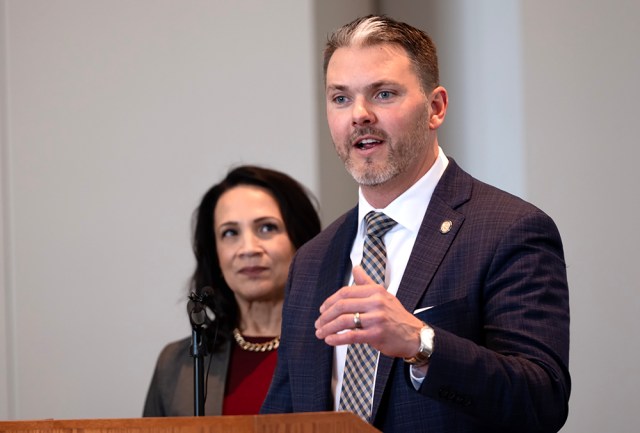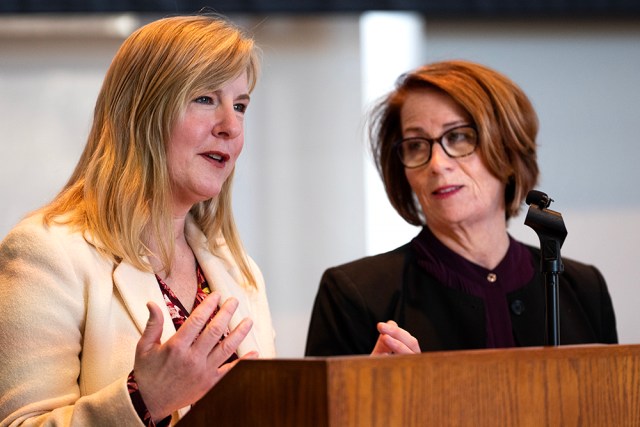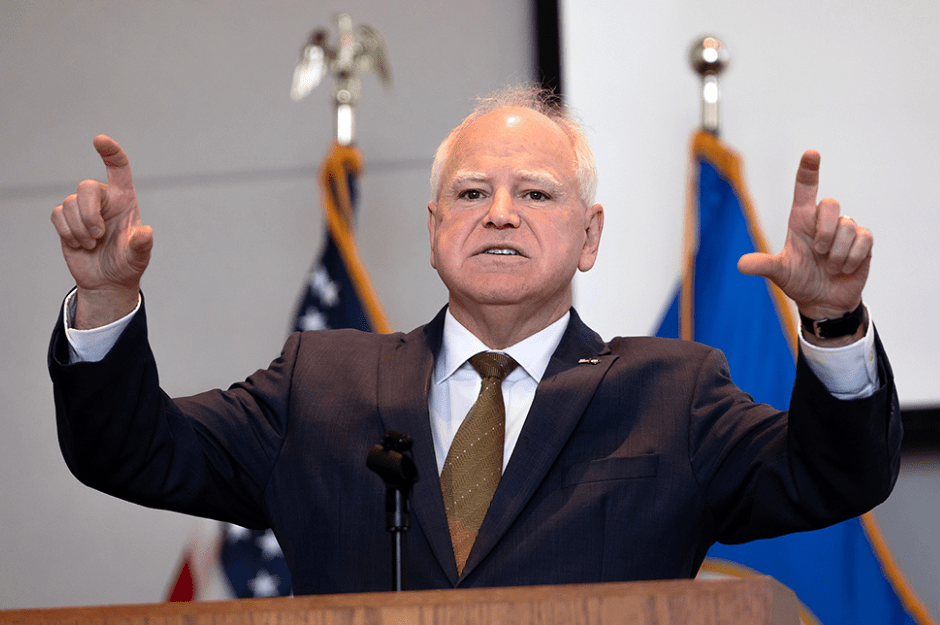
Minneapolis celebrates 1st anniversary of CROWN Act banning hair discrimination
February 29, 2024
Two Fine Dining Veterans Are Launching a $3 Value Menu in the Twin Cities
February 29, 2024
Minnesota’s budget situation improved slightly Thursday when an updated economic and revenue forecast was released by state economists.
That doesn’t mean the Gov. Tim Walz and DFL leaders of the Legislature have changed their message about adding spending to the already record budget adopted last year.
“Caution” remained the buzzword.
Compared to the last forecast in December, the national and state economies are projected to perform somewhat better. That translates into better-than-expected performance of existing state taxes on income, sales and other activities.
The current two-year budget period set to spend $70.5 billion will end with a surplus of $3.7 billion in June of 2025, assuming no additional spending is appropriated this legislative session. That compares to a projection of $2.4 billion extra in the November forecast.
And the projection for how much money will come in during the 2025-2026 budget period has improved as well. By then, the state will be spending $66.3 billion over two years — down from the current budget because some of the spending is one-time spending. During that period, the state will collect $1.5 billion less than it is expected to spend. In November, this imbalance was projected to be $2.3 billion.
That is termed a “structural imbalance” by budget officials. Is it a projected deficit as Republicans said again Thursday? Did DFLers really go from a $19 billion surplus in 2023 to a $1.5 billion deficit by 2025? Yes. And No.
Welcome to the world of budget accounting. Because the state will end the current budget period with extra money — that $3.7 billion — it can use those funds to supplement what it is projected to collect in taxes to cover what it is projected to spend. By that accounting, the state can cover the bills due in that future budget period.
But without those rollover funds, it wouldn’t. Thus the so-called structural imbalance. But until that future budget is approved by a future Legislature, it isn’t technically a deficit.
After being lambasted at the December forecast for the apparent verbal gymnastics over when is an imbalance a deficit, Walz and DFL leaders were prepared to push back.
“Our forecast is good news. Our economy is humming along,” Walz said. The programs and spending in the current budget are helping residents and helping the economy, he said.
“The bottom line is we have surpluses. We have responsible spending. We have cut the cost of living for the middle class,” Walz said. “We have to have some folks stop rooting against Minnesota. This is positive.”
GOP leaders remained unconvinced. Senate Majority Leader Mark Johnson riffed on the fact that the forecast was released on Leap Day.
“There’s no leaping over it, Democrats’ tax-and-spend policies lead to a boom-and-bust budget,” the East Grand Forks Republican said. “Democrats continue to entertain more spending this session while state officials urge caution, especially as the looming deficit signals risk to the state’s credit rating.”
His House counterpart, Rep. Lisa Demuth of Cold Spring, said the forecast shows a deficit despite how budget officials cast it.

“You hear structural imbalance but it is definitely going to be a structural deficit going forward,” she said.
But all the math changes if the 2024 Legislature increases spending. Every dollar added to the budget now is one dollar less in the surplus and one dollar less to roll over into 2025-26 to cover projected costs.
“The forecast doesn’t change our focus for this session,” Walz said. “We’re focused on implementation and infrastructure.” He’ll produce a supplemental budget in a few weeks but urged caution, “because revenues and spending are pretty much in balance.”
Because the state’s borrowing levels are related to how much it collects in taxes, any increases in the forecast can also allow more borrowing via bond sales to investors. So Thursday’s improved forecast also increased the potential size of a bonding bill to pay for construction projects — from $830 million to $980 million. The capital construction budget also sometimes include cash in addition to borrowing and this forecast could free up some one-time spending on construction.
House Speaker Melissa Hortman was more clear about new spending.
“We have our eyes on that structural imbalance in the tails,” the Brooklyn Park DFLer said, referring to the 2025-2026 budget period. “I do not foresee making any commitments to spending that we can’t pay for.”

One spending area that could get some attention with these numbers is an emergency infusion of $120 million into emergency services in Greater Minnesota. That one-time spending is being requested by ambulance and EMT providers. But requests such as increasing the income levels for child care subsidies is less certain.
Budget officials attribute the slight improvement in the forecast to enhancements to predictions of gross domestic product nationally. That broad measure of the economy has been increased due to actual economic growth and expectations that it will continue as inflation — and interest rates — come down.
The state’s corporate franchise tax — and increased corporate profits in the state — is driving most of the increased tax collections.
“The outlook for the national economy continues to improve,” said Erin Campbell, the commissioner of Minnesota Management and Budget. Unemployment is also expected to be better than the national average. While that can lead to pressure on businesses to pay higher wages to attract workers, she said she doesn’t expect it to affect inflation.
The state also has a Rainy Day savings account and other cash-flow accounts that hold $3.3 billion.
But she, too, said spending this year could make the numbers worse in 2025.
“Minnesota remains on very solid fiscal footing,” she said.

Peter Callaghan covers state government for MinnPost. Follow him on Twitter @CallaghanPeter or email him at pcallaghan@minnpost.com.
The post Why Minnesota’s $3.7 billion budget surplus won’t result in a spending spree at the State Capitol appeared first on MinnPost.








